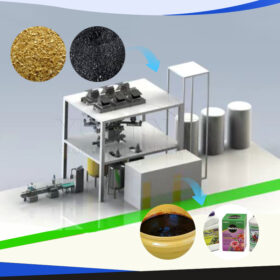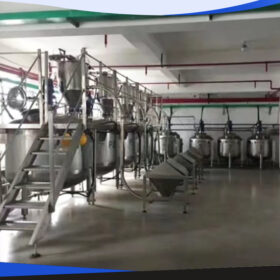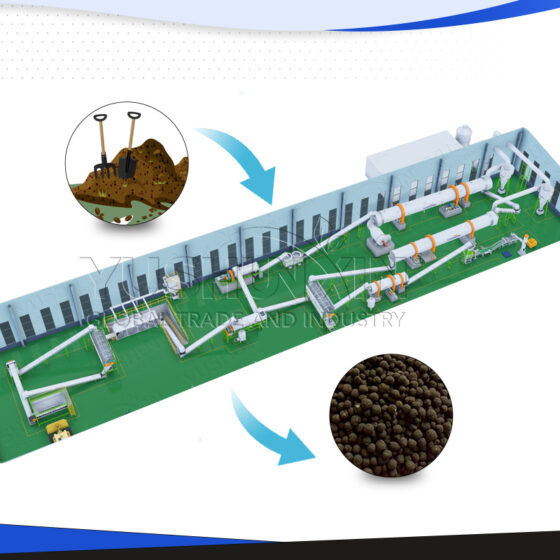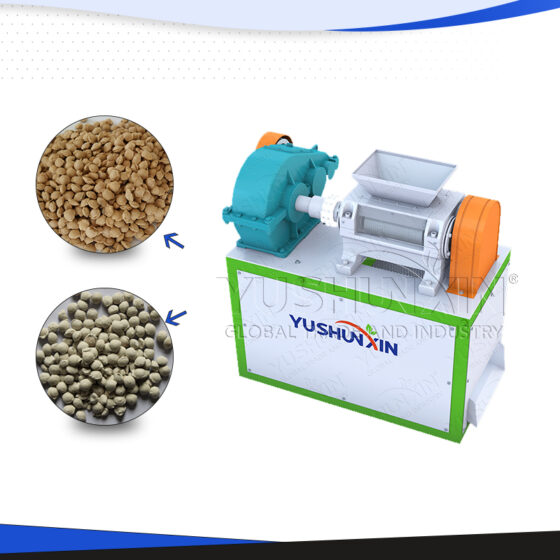Liquid water-soluble fertilizer production line is a set of industrial equipment used to produce water-soluble fertilizer in liquid form. Its main function is to process various solid and liquid raw materials through a series of processes such as processing, mixing, filtering, and reaction to make high-quality liquid water-soluble fertilizer. It mainly consists of mixing equipment, filtering equipment, reactor, heating and cooling equipment and filling equipment. It is suitable for agriculture, gardening, flower planting and other industries.
Production Process
1. Raw Material Preparation
Main Nutrient Elements: Such as nitrogen sources (urea, ammonium nitrate, etc.), phosphorus sources (phosphoric acid, monopotassium phosphate, etc.), potassium sources (potassium chloride, potassium sulfate, etc.).
Trace Elements: Such as zinc sulfate, copper sulfate, ferrous sulfate, boric acid, ammonium molybdate, etc.
Organic nutrients: Amino acids, fulvic acid, alginic acid, etc.
Chelating Agents: Such as EDTA, DTPA, used to stabilize trace elements.
Stabilizers and Preservatives: Used to extend the shelf life of the product.
Solvent: Typically water.
2. Dissolution
Dissolution Process: Dissolve various solid raw materials (such as urea, potassium sulfate, etc.) in water, ensuring complete dissolution. Stirring equipment can be used to accelerate the dissolution process.
Dissolution Order: Dissolve the macronutrients first, then gradually add trace elements and other additives to avoid precipitation reactions.
3. Mixing
Mixing Equipment: Use a stirrer or mixing tank to thoroughly mix all the ingredients.
Uniform Mixing: Ensure that all raw materials are evenly distributed throughout the solution. Homogenization can be performed to ensure consistency.
4. Chelation and Stabilization
Chelation Reaction: Add chelating agents to react with trace elements to form stable chelates.
Stabilizer Addition: Add stabilizers and preservatives as needed to prevent precipitation or degradation during storage.
5. Filtration
Filtration Equipment: Use a filter or filtration machine to remove insoluble impurities from the solution, ensuring the liquid is clear.
Filtration Precision: Choose the appropriate filtration precision based on product requirements, usually using fine filtration or ultrafiltration equipment.
6. Blending and Testing
Concentration Adjustment: Adjust the concentration of the solution according to the product formula and concentration requirements.
Quality Testing: Conduct a series of quality tests, including nutrient content, pH value, density, heavy metal content, and microbial indicators, to ensure the product meets relevant standards.
7. Packaging
Packaging Materials: Choose appropriate packaging materials, such as plastic bottles, plastic barrels, or IBC tanks.
Filling and Sealing: Fill and seal the qualified liquid water-soluble fertilizer, ensuring good packaging sealability to prevent leakage and contamination.
8. Storage
Storage Conditions: Store the packaged products in a cool, dry warehouse, avoiding direct sunlight and high temperatures.
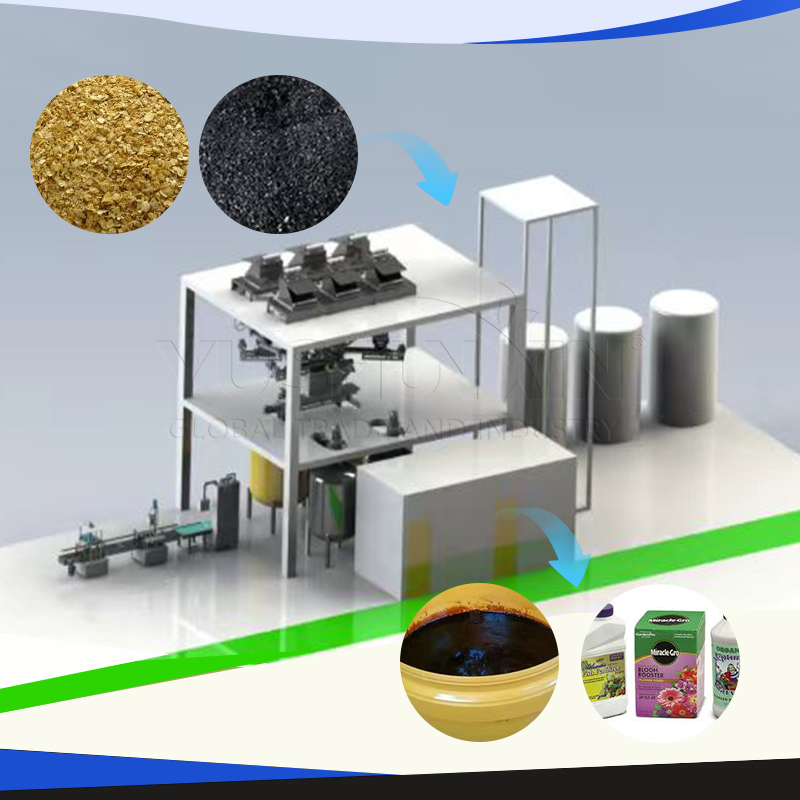
- Detalhes do produto
- Características
- Inquérito
1.High-Efficiency Production
The production process, from raw material proportioning to finished product filling, is highly automated, reducing manual intervention and improving production efficiency.
2.Precise Formulation
The dosing system accurately measures various raw materials according to the set formula, ensuring consistency in each batch of products. Formulas can be flexibly adjusted according to market and crop needs.
3. High-Quality Control
Equipped with an online monitoring system to detect pH, nutrient concentration, and other parameters in real-time, ensuring product quality meets standards.
4. Temperature Control
Heating and Cooling Systems: Equipped with heating and cooling systems to adjust the solution temperature as needed, ensuring optimal reaction conditions.
5. Safety and Environmental Protection
The entire production process is conducted in a closed environment, reducing pollutant emissions and meeting environmental protection requirements.
6. Versatility
Multiple Raw Material Handling: Can handle a variety of liquid and solid raw materials, offering high adaptability. Capable of producing different types and formulas of liquid water-soluble fertilizers to meet diverse market demands.
7. Ease of Operation and Maintenance
The automated control system and user-friendly interface design make operation simple and convenient. Modular design of equipment allows for easy disassembly and maintenance, reducing maintenance costs.
